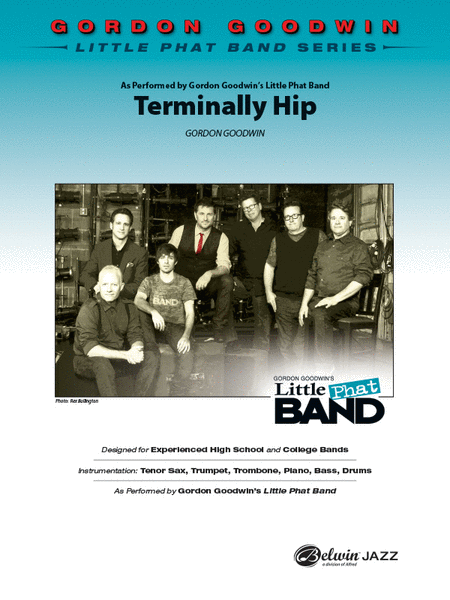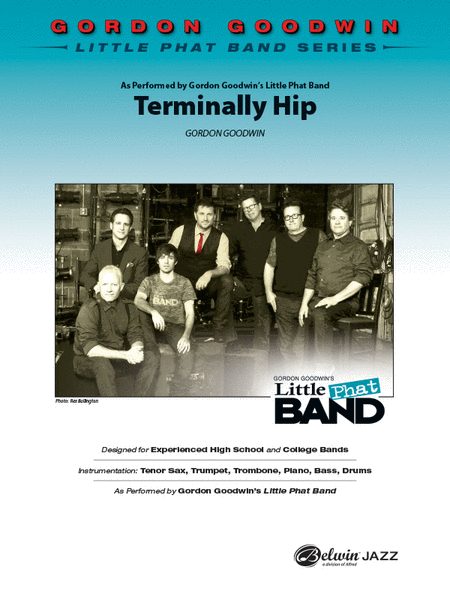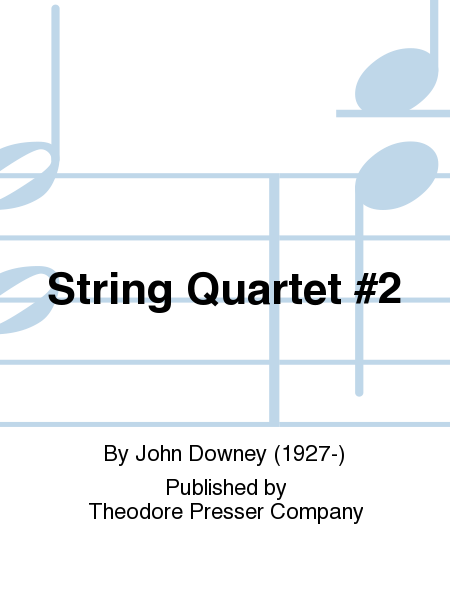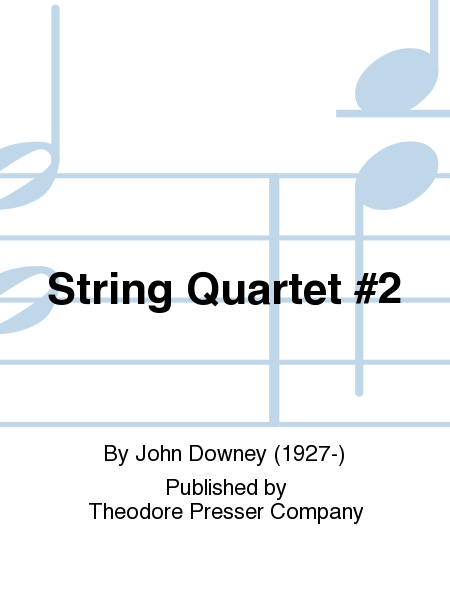|
| Terminally Hip
Ensemble Jazz - Intermédiaire
Alfred Publishing
Jazz Ensemble - Grade 3.5 SKU: AP.50951 Composed by Gordon Goodwin. Jazz ...(+)
Jazz Ensemble - Grade 3.5
SKU: AP.50951
Composed by Gordon
Goodwin. Jazz Ensemble;
MakeMusic Cloud;
Performance Music
Ensemble; Single Titles.
Jazz Band Series. Jazz.
Score and Part(s).
Duration 5:20. Alfred
Music #00-50951.
Published by Alfred Music
(AP.50951). ISBN
9781470669898. UPC:
038081591780.
English. Yes, it's
hip! A clever swinging
treatment of a catchy
tune played around 150
BPM. Lead trumpet range
is to written B above the
staff, the solo section
includes suggested solos
written for C, B-flat,
E-flat and trombone
players, your choice. The
shout chorus features
drums trading with the
ensemble and the optional
parts include flute and
vibes. (5:20). $55.00 - Voir plus => AcheterDélais: 1 to 2 weeks | | | |
| Terminally Hip
Ensemble Jazz [Conducteur] - Intermédiaire
Alfred Publishing
Jazz Ensemble - Grade 3.5 SKU: AP.50951S Composed by Gordon Goodwin. Jazz...(+)
Jazz Ensemble - Grade 3.5
SKU: AP.50951S
Composed by Gordon
Goodwin. Jazz Ensemble;
Performance Music
Ensemble; Single Titles.
Jazz Band Series. Jazz.
Score. 20 pages. Duration
5:20. Alfred Music
#00-50951S. Published by
Alfred Music (AP.50951S).
ISBN 9781470669904.
UPC: 038081591797.
English. Yes, it's
hip! A clever swinging
treatment of a catchy
tune played around 150
BPM. Lead trumpet range
is to written B above the
staff, the solo section
includes suggested solos
written for C, B-flat,
E-flat and trombone
players, your choice. The
shout chorus features
drums trading with the
ensemble and the optional
parts include flute and
vibes. (5:20). $11.00 - Voir plus => AcheterDélais: 1 to 2 weeks | | | |
| Terminally Hip
Ensemble Jazz [Conducteur] - Intermédiaire
Alfred Publishing
Jazz Ensemble - Grade 3.5 SKU: AP.41158S As Performed by Gordon Goodwi...(+)
Jazz Ensemble - Grade 3.5
SKU: AP.41158S
As Performed by Gordon
Goodwin's Little Phat
Band. Composed by
Gordon Goodwin. Jazz
Ensemble; Performance
Music Ensemble; Single
Titles. Gordon Goodwin
Little Phat Band Series.
Jazz. Score. 12 pages.
Duration 3:52. Alfred
Music #00-41158S.
Published by Alfred Music
(AP.41158S). UPC:
038081475516.
English. A medium
bright swing at 160 BPM
for Grade 3. The
instrumentation is for
tenor sax, trumpet,
trombone, piano, bass,
guitar, and drums, and
the chart includes solo
space for all.
(3:52). $8.00 - Voir plus => AcheterDélais: 1 to 2 weeks | | | |
| Terminally Hip
Ensemble Jazz - Intermédiaire
Alfred Publishing
Jazz Ensemble - Grade 3.5 SKU: AP.41158 As Performed by Gordon Goodwin...(+)
Jazz Ensemble - Grade 3.5
SKU: AP.41158
As Performed by Gordon
Goodwin's Little Phat
Band. Composed by
Gordon Goodwin. Jazz
Ensemble; Performance
Music Ensemble; Single
Titles. Gordon Goodwin
Little Phat Band Series.
Jazz. Score and Part(s).
30 pages. Duration 3:52.
Alfred Music #00-41158.
Published by Alfred Music
(AP.41158). UPC:
038081475509.
English. A medium
bright swing at 160 BPM
for Grade 3. The
instrumentation is for
tenor sax, trumpet,
trombone, piano, bass,
guitar, and drums, and
the chart includes solo
space for all.
(3:52). $48.00 - Voir plus => AcheterDélais: 1 to 2 weeks | | | |
| String Quartet No. 2
Quatuor à cordes: 2 violons, alto, violoncelle
Theodore Presser Co.
Chamber Music String Quartet SKU: PR.114405050 Composed by John Downey. S...(+)
Chamber Music String
Quartet SKU:
PR.114405050 Composed
by John Downey. Set of
Score and Parts. With
Standard notation. 53
pages. Duration 25
minutes. Theodore Presser
Company #114-40505.
Published by Theodore
Presser Company
(PR.114405050). UPC:
680160008377. 11 x 14
inches. Although
structurally it
subdivides into five
movements, the entire
quartet emerges as one
vast continuum. There are
no formal breaks between
movements. However,
certain musical signposts
can be discerned,
associated with each of
the movements'
terminations and new
beginnings. The opening
movement, The Nostalgia
of Clanging Bell
Sonorities, begins
floating on recurrent Bbs
whose soft rhythmic flow
slowly puts into motion
strong undercurrents
suggestive of the latent
power of water... After
several suggestions of
tolling bells, the
movement gradually fades
into hushed tones of
veiled and very distant
sonorities. It uses a
unique efffect, for the
first time in a musical
context, conveyed through
the use of extra heavy
practice mutes. The
second movement, The
Spill of Water ,
disengages itself from
the first through its
distinct contrast in
tempo. Water moves fast,
and when it splashes, it
tends to run wildly. In
this case, it happens to
be bubbly water that
gushes forth bodly...
smashing across rocky
shorlines. So, too, the
music attempts to conjure
such moods. At the end of
this movement, a cello
cadenza emerges,
introducing an
introspective type of
melodicism. The third
movement, The Poignancy
of Memory, contains many
silences as it tries to
convey memory through
fragmented remembrances
much like often occur in
our dream state.
Progressing through
several slowly building
images, it gradually
works itself into
juxtaposition of musical
images. Towards the
movement's end, high
harmonics are sounding in
all four instruments
while left hand pizzicato
notes in the cello pluch
the last remembrances of
this central core. Almost
imperceptibly, the viola
assumes leadership as it
dissolves into: The
fourth movement, The
Fluidity of Motion, which
has mostly the viola, but
also the cello,
articulating lyrical
statements against the
sheets of sound conjured
up by the two violins
playing a flood of
swirling figures, evokes
a kind of static motion
in spae. Here, the
virtually imperceptible
manner in which this
hushed whisper continues
incessantly, can suggest
the potential fluidity
with which movement may
inch forward... Later
into the fourth movement
, two fairly extended
solos by the second and
then the first violins,
lead to a kind of
spontaneous dialogue
among the four
instrumentalists.
Eventually, this musical
conversation gets caught
up in: The fifth
movement's The Rush of
Time, which opens with a
hushed flurry of speed,
precipitates the Finale.
It generates, at first
slowly, but then very
swiftly, whole shifts of
rhythmic fields that
initially seem to
conflict with one
another. Ultimately, this
use of 'psycho-rhythmics
contributes to an on-rush
of motion and time.
Rhythmic changes are, at
times, abruptly
precipitated with but
little or no preparation
creating a kind of
inevitability in forward
thrust, while the
movement rushes forward
with a feeling of gradual
and continuous
acceleration. It gathers
density as more and more
notes are piled
progressively upon
successive beats. The
attempt is to spark
tension and ignite
excitement by means of
frenetic confrontations
of dissimilitudes.
Ultimately - with the
help of time - these
polarities centrifically
spin out their own
destinies with their
accompanying fall-out and
own inevitable
resolutions. $130.00 - Voir plus => AcheterDélais: 2 to 3 weeks | | | |
| String Quartet No. 2
Quatuor à cordes: 2 violons, alto, violoncelle [Conducteur]
Theodore Presser Co.
Chamber Music String Quartet SKU: PR.11440505S Composed by John Downey. F...(+)
Chamber Music String
Quartet SKU:
PR.11440505S Composed
by John Downey. Full
score. With Standard
notation. 53 pages.
Duration 25 minutes.
Theodore Presser Company
#114-40505S. Published by
Theodore Presser Company
(PR.11440505S). UPC:
680160008391. 11 x 14
inches. Although
structurally it
subdivides into five
movements, the entire
quartet emerges as one
vast continuum. There are
no formal breaks between
movements. However,
certain musical signposts
can be discerned,
associated with each of
the movements'
terminations and new
beginnings. The opening
movement, The Nostalgia
of Clanging Bell
Sonorities, begins
floating on recurrent Bbs
whose soft rhythmic flow
slowly puts into motion
strong undercurrents
suggestive of the latent
power of water... After
several suggestions of
tolling bells, the
movement gradually fades
into hushed tones of
veiled and very distant
sonorities. It uses a
unique effect, for the
first time in a musical
context, conveyed through
the use of extra heavy
practice mutes. The
second movement, The
Spill of Water,
disengages itself from
the first through its
distinct contrast in
tempo. Water moves fast,
and when it splashes, it
tends to run wildly. In
this case, it happens to
be bubbly water that
gushes forth bodly...
smashing across rocky
shorelines. So, too, the
music attempts to conjure
such moods. At the end of
this movement, a cello
cadenza emerges,
introducing an
introspective type of
melodicism. The third
movement, The Poignancy
of Memory, contains many
silences as it tries to
convey memory through
fragmented remembrances
much like often occur in
our dream state.
Progressing through
several slowly building
images, it gradually
works itself into
juxtaposition of musical
images. Towards the
movement's end, high
harmonics are sounding in
all four instruments
while left hand pizzicato
notes in the cello pluck
the last remembrances of
this central core. Almost
imperceptibly, the viola
assumes leadership as it
dissolves into: The
fourth movement, The
Fluidity of Motion, which
has mostly the viola, but
also the cello,
articulating lyrical
statements against sheets
of sound conjured up by
the two violins playing a
flood of swirling
figures, evokes a kind of
static motion in space.
Here , the virtually
imperceptible manner in
which this hushed whisper
continues incessantly,
can suggest the potential
fluidity with which
movement may inch
forward... Later into the
fourth movement, two
fairly extended solos by
the second and then the
first violins, lead to a
kind of spontaneous
dialogue amont the four
instrumentalists.
Eventually, this musical
conversation gets caught
up in: The fifth
movement's The Rush of
Time, which opens with a
hushed flurry of speed,
precipitates the Finale.
It generates, at first
slowly, but then very
swiftly, whole shifts of
rhythmic fields that
initially seem to
conflict with one
another. Ultimately, this
use of psycho-rhythmics
contributes to an on-rush
seem of motion and time.
Rhythmic changes are, at
times, abruptly
precipitated with but
little or no preparation
creating a kind of
inevitability in forward
thrust, while the
movement rushes forward
with a feeling of gradual
and continuous
acceleration. It gathers
density as more and more
notes are piled
progressively upon
successive beats. The
attempt is to spark
tension and ignite
excitement by means of
frenetic confrontations
of dissimilitudes.
Ultimately - with the
help of time - these
polarities centrifically
spin out their own
destinies with their
accompanying fall-out and
own inevitable
resolutions. $75.00 - Voir plus => AcheterDélais: 2 to 3 weeks | | |
|





